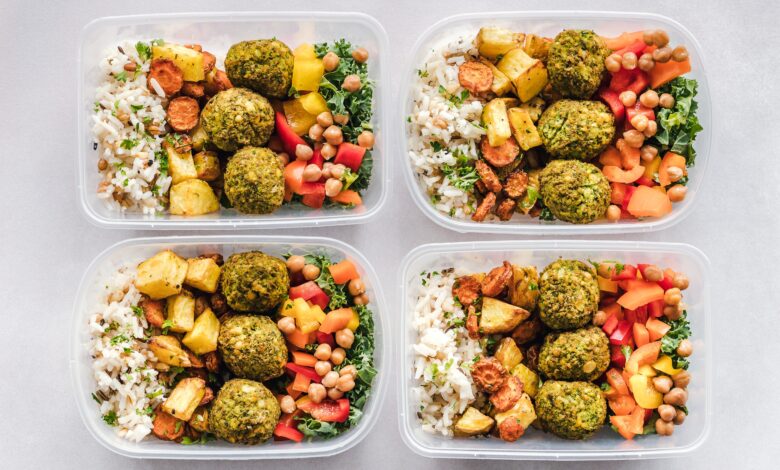
Several tons of food are thrown away every year around the world. Many of the dishes that end up in the trash could still have been eaten. How do you find your way around food preservation?
It is recommended to thaw food at room temperature
Fake.As bacteria develop from 5°C, it is strongly advised not to thaw food at room temperature. The preferred means of defrosting is the refrigerator. The time required will vary depending on the size of the dish and the type of food, and can range from a few hours to overnight. The microwave is an interesting alternative in case of lack of time, since it allows rapid defrosting. It is important to select the correct mode and to make sure that the container in which the food is placed can fit in this type of appliance. It is also possible to thaw hermetically sealed dishes by submerging them in water for a maximum of 2 hours. In addition, the temperature should not exceed 21°C and the water should be changed every 30 minutes. You have to be very careful:
Food can be stored in the freezer for an indefinite period
Fake. The shelf life in the freezer varies according to each food, but never exceeds 1 year. The Ministry of Agriculture, Fisheries and Food of Quebec has developed a charter for the storage of perishable foods called the Thermoguide1 .Foods that can be stored in the freezer for up to 1 year include fruits and vegetables, including asparagus, broccoli, apples, tomatoes and cherries. Salted butter and fresh herbs are also on this list. Meat can be preserved for 1 to 10 months depending on whether it is poultry, pork, beef or another animal. The period also varies depending on whether the piece of meat is cooked or raw. Fish and seafood will keep for a maximum of 6 months. Lasagna, soup, pie and other prepared meals have a freezing period ranging from 1 to 10 months.
Leftovers will keep in the fridge for 2-3 days.
True. All leftovers can be kept, as long as they are placed in the refrigerator for a maximum of 2 hours after being prepared. This period is reduced to 1 hour in summer. Contrary to popular thought, dishes can be refrigerated even if they are still hot. It is advisable to distribute them in several containers about 5 cm (2 inches) thick in order to speed up the refrigeration process and thus mitigate the proliferation of bacteria. It will then be possible to keep the food for 2 to 3 days in the refrigerator, after which it is better to freeze it. A simple trick to remember the food preservation process is the following rule: 2 hours-2 inches-2 days
Dairy products can freeze
True.All dairy products can be frozen: milk, butter, cheese, yogurt (yogurt) and cream. Milk, whether pasteurized, sterilized or homogenized, can be stored for 6 months in the freezer. If it is a milk with a high fat content, it is important to stir well before use after defrosting to avoid any deposits that may have formed. The butter can also stay in the freezer for up to 6 months. After this period, its taste qualities may be altered. Unlike moist cheeses whose texture would be modified, those with a low humidity rate freeze very well for a period of up to 6 months. Although it is not dangerous for your health to consume yogurt (yogurt) that has been frozen, the texture will become more liquid and lumpy. The cream will react the same way to freezing. To regain a smooth texture, simply beat it lightly after defrosting.
- bridge
- Allergies (overview)
- Achluophobia : all about the fear of the dark
- At what age can you do bodybuilding?
- Fatigue in the morning: causes and remedies
The storage time of fresh fruits and vegetables varies according to each food
True. Like other perishable foods, fruits and vegetables should be refrigerated at a temperature between 0°C and 4°C. Shelf life varies from food to food. It can be a few days, between 3 and 5, as with cherries, blueberries, asparagus, mushrooms and grapes. Plums, tomatoes, lettuce, cucumber and green onions, for example, will keep in the fridge for up to 1 week. Other foods can keep for up to 2 or 3 weeks. This is the case with cranberries, celery, beets and cabbage. The apple is probably the fruit whose freshness keeps the longest, 6 months. For a more complete list, it is possible to refer to the Thermoguideof the Ministry of Agriculture, Fisheries and Food of Quebec.
Always respect the expiry date
Fake. In addition to products such as flour, sugar, wine, salt or fruit and vegetables, the majority of foods have an expiry date. The labeling can in fact indicate two types of date: the expiry date of consumption (DLC) and the expiry date of optimal use (DLUO). The DLC generally bears the mention “to consume until…” followed by a specific date. When exceeded, the product may present a health hazard. The BBD is rather a reference date, which means that after this period the product may have lost its taste and nutritional qualities without however being harmful to health. It is also important to know that it is the producers/manufacturers who put the dates on their products themselves after carrying out various tests.










